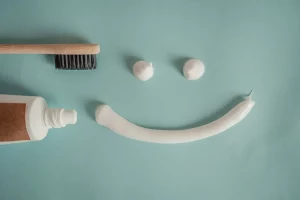How to Make Your Own Jewelry: A Step-by-Step Guide


How to Make Your Own Jewelry: A Step-by-Step Guide


Introduction
Making your own jewelry can be a rewarding and creative hobby. Whether you want to craft unique pieces for yourself or create personalized gifts for friends and family, jewelry making allows you to express your style and imagination. In this step-by-step guide, we’ll explore the process of making your own jewelry, from selecting materials to adding finishing touches. Get ready to unleash your creativity and embark on a delightful journey of jewelry making.
Step 1: Gather Inspiration
Before you start making jewelry, gather inspiration from various sources. Browse through jewelry magazines, websites, and social media platforms like Pinterest and Instagram. Take note of designs, colors, and materials that catch your eye. You can also draw inspiration from nature, art, or your favorite jewelry pieces. Having a clear idea of the styles you like will guide you during the creative process.
Step 2: Choose Your Jewelry Type
Decide on the type of jewelry you want to make. There are various options to explore, including:
Necklaces: Statement necklaces, delicate chains, or beaded designs.
Earrings: Dangling, studs, or hoop earrings with various materials and embellishments.
Bracelets: Bangles, cuffs, or charm bracelets.
Rings: Simple bands, wire-wrapped designs, or statement rings.
Selecting the type of jewelry will help you determine the materials and tools you need.
Step 3: Select Your Materials
Once you know the type of jewelry you want to make, it’s time to choose your materials. Depending on your design, you may need the following:
Beads: Various shapes, sizes, and materials, such as glass, gemstones, or wooden beads.
Wire: Different gauges of wire, including copper, silver, or gold, for wire wrapping and creating jewelry components.
Chains: Choose from a variety of chain styles, lengths, and materials.
Findings: Clasps, jump rings, ear wires, and other essential components to assemble your jewelry.
Charms and Pendants: Add a personal touch to your designs with charms and pendants that reflect your interests or symbols with sentimental value.
Tools: Jewelry-making pliers, wire cutters, and other specialty tools.
Invest in good-quality materials and tools to ensure your jewelry lasts and looks professional.
Step 4: Learn Basic Jewelry-Making Techniques
Familiarize yourself with basic jewelry-making techniques. Some essential techniques to learn include:
Stringing: Creating necklaces or bracelets by threading beads onto a stringing material like wire or string.
Wire Wrapping: Using wire to create loops, coils, and connections for jewelry components.
Earring Assembly: Attaching ear wires or posts to create earrings.
Chain Assembly: Connecting chain links and findings to complete necklaces or bracelets.
Practice these techniques using inexpensive materials before working with more precious materials.
Step 5: Design Your Jewelry
With your inspiration and materials in hand, start sketching your designs on paper or using jewelry design software. Plan the layout, color combinations, and arrangement of beads or charms. Consider how the jewelry will hang or fit, ensuring it’s comfortable and aesthetically pleasing.
Step 6: Start Creating
Now it’s time to bring your designs to life. Follow your sketches and begin assembling your jewelry. Take your time and pay attention to details. If you make a mistake or aren’t happy with the result, don’t be discouraged. Jewelry making is a learning process, and each piece you create will improve your skills.
Step 7: Add Finishing Touches
After completing the main components of your jewelry, add finishing touches. Check for any loose ends, sharp edges, or uneven components. Use jewelry pliers to secure jump rings and clasps properly. Clean your jewelry with a jewelry polishing cloth to give it a professional shine.
Step 8: Safety Precautions
While jewelry making is a fun and creative activity, it’s essential to take some safety precautions:
Use protective eyewear when working with tools like wire cutters and pliers.
Keep small beads and findings away from young children to avoid choking hazards.
Work in a well-ventilated area when using adhesives or materials with fumes.
Dispose of any sharp or hazardous waste properly.
Tips for Successful Jewelry Making
Organize Your Materials: Keep your beads, findings, and tools in separate containers for easy access and organization.
Practice Patience: Jewelry making requires precision and attention to detail. Take your time and enjoy the creative process.
Experiment with Different Techniques: Don’t be afraid to try new techniques and materials to expand your skills and create unique designs.
Seek Inspiration from Nature: Incorporate natural elements like shells, stones, or dried flowers into your jewelry designs for a touch of nature.
Personalize Gifts: Craft personalized jewelry for loved ones by incorporating birthstones, initials, or meaningful symbols.
Join a Jewelry-Making Community: Connect with other jewelry makers through online forums, workshops, or local craft groups to exchange ideas and tips.
Additional Techniques to Explore
Beyond the basic techniques, there are numerous advanced techniques and styles you can explore as you gain confidence in your jewelry-making skills:
Bead Embroidery: Incorporate beads onto fabric or leather to create intricate designs and textures.
Metal Stamping: Use metal stamps to add personalized messages or designs to metal components.
Kumihimo: Learn the Japanese art of braiding to create stunning cords for necklaces and bracelets.
Resin Jewelry: Experiment with resin to encapsulate small objects or create unique jewelry pieces with a glossy finish.
Conclusion
Making your own jewelry is a wonderful way to express your creativity and craft personalized pieces that reflect your style and personality. With the right materials, tools, and techniques, you can create unique and meaningful jewelry that you’ll cherish or share as thoughtful gifts.
Remember that practice and experimentation are key to improving your skills, so don’t be afraid to try new designs and techniques. Jewelry making is a delightful and fulfilling hobby that allows you to unleash your creativity and produce beautiful wearable art.








